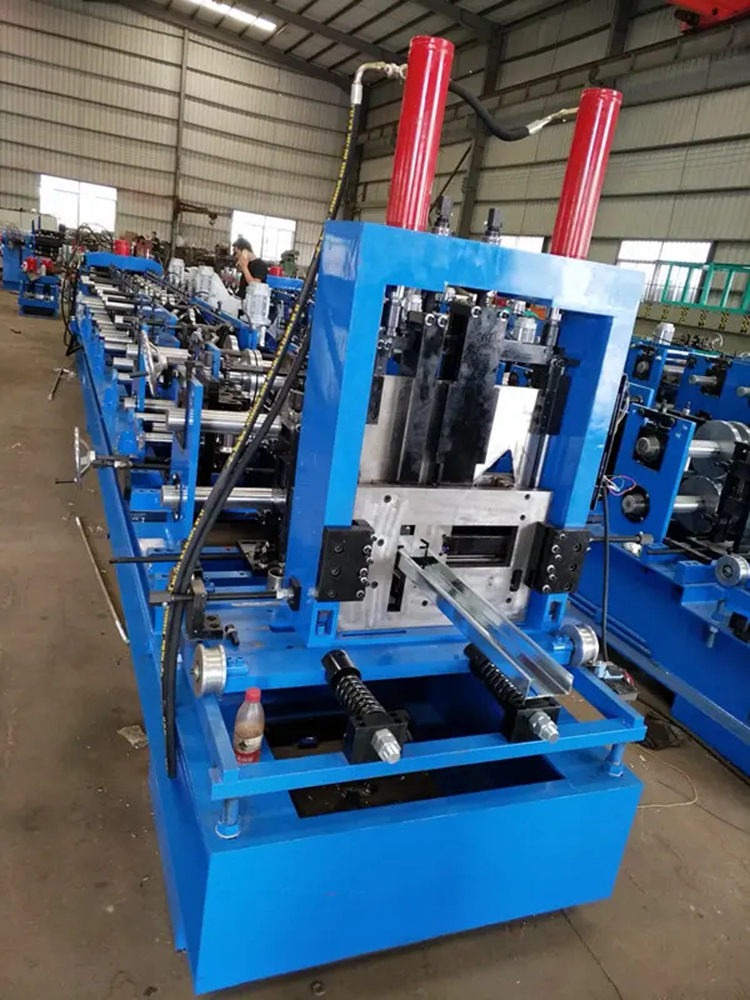
Roll Forming Machine for Z Purlins An Overview
Roll forming is a sophisticated manufacturing process extensively used in the production of various metal profiles, including Z purlins. A roll forming machine for Z purlins is specifically designed to create these structural components that are essential in construction, particularly in the framework of buildings. This article delves into the mechanics, benefits, and applications of roll forming machines for Z purlins, providing insight into their significance in the industry.
Understanding Z Purlins
Z purlins play a vital role in the construction industry, acting as horizontal supports for roofing and wall systems. Their Z shape enables them to interlock effectively when placed alongside one another, providing enhanced structural stability. They are predominantly made from steel, offering exceptional strength-to-weight ratios, which is crucial for the integrity of any construction project.
The Roll Forming Process
The roll forming technique involves feeding a continuous strip of metal through a series of rollers that shape the material progressively. For Z purlins, the process starts with the metal being uncoiled and fed into the machine. The roll forming machine is equipped with a series of rollers, each designed to shape the metal into the desired profile. As the strip passes through the rollers, each subsequent set of rollers gradually bends and forms the metal into the Z purlin shape.
The roll forming process is highly efficient and can produce long lengths of Z purlins continuously. After the forming process, the purlins may undergo additional processes, such as cutting to length, punching holes for fastening, and surface treatment for corrosion resistance. The result is a product that is both consistent in quality and tailored to specific construction needs.
Advantages of Using Roll Forming Machines
1. High Efficiency Roll forming is a continuous process, allowing for high output rates, which is beneficial for large-scale construction projects.
2. Material Utilization The process allows for near-zero waste, as the metal strip is used efficiently without significant off-cuts.

4. Customizability Manufacturers can easily adjust the machine settings to create custom profiles, catering to specific design requirements.
5. Durability The products generated through roll forming are robust and can withstand various environmental conditions, making them ideal for structural applications.
Applications of Z Purlins
Z purlins are predominantly used in steel buildings, industrial facilities, and agricultural structures. Their primary applications include
- Roofing Systems Z purlins are used as secondary members in roofing systems, providing support for roof panels and insulation.
- Wall Frames They serve as vertical and horizontal members in wall panels, contributing to the overall strength of the building.
- Support Structures In large-span structures, Z purlins provide essential support, ensuring stability and load distribution.
- Modular Construction The versatility of Z purlins allows them to be easily integrated into modular building systems, enhancing construction speed and efficiency.
Conclusion
The roll forming machine for Z purlins represents a remarkable advancement in manufacturing technology, offering various benefits that contribute to the efficiency and effectiveness of construction projects. With their ability to produce durable, precise, and customizable profiles, Z purlins have become a staple in modern construction, supporting various architectural designs while ensuring structural integrity. As the construction industry continues to evolve, the role of roll forming machines will undoubtedly become even more significant, paving the way for innovative construction techniques and sustainable building practices.